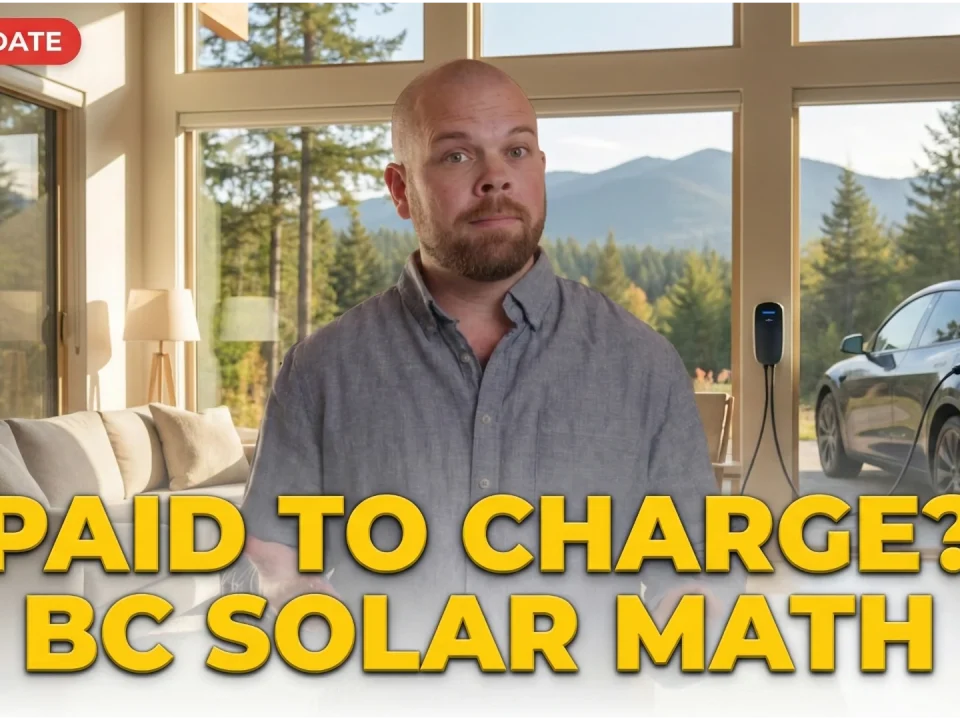
Solar Panels Over Crops: What Canada Can Learn From Japan’s Breakthrough Study
September 15, 2025
Solar Farms on Your Land: The End of Farming or a Billion-Dollar Lifeline?
September 25, 2025So, you’re thinking about solar in Nova Scotia. Good on you. I’ve been in this game for over a decade, and I’ve seen how going solar can be a game-changer for homeowners. But here in Nova Scotia, the relationship between solar panel owners and Nova Scotia Power (NSP) has been, let’s say, complicated. It’s a story of big promises, sudden changes, and a lot of confusion for everyday people just trying to lower their power bills.
This article breaks down exactly how the system works, what the numbers say, and what it all means for your wallet.
How Solar Billing Works in Nova Scotia: The Net Metering Deal
At the heart of the system is something called “net metering.” It’s a simple idea: when your solar panels produce more electricity than you’re using, that excess power flows back into the grid. NSP gives you a credit for that power. When you use more electricity than your panels are producing (like at night), you draw power from the grid and use up those credits.
Essentially, the grid tracks the energy you contribute versus the energy you use.
- You deposit: Excess solar energy you generate.
- You withdraw: Power from the grid when you need it.
- The goal: At the end of the year, you want your deposits and withdrawals to be as close to even as possible.
This system has been the main driver for residential solar in the province. According to provincial data, the net metering program has grown steadily, with over 4,000 homes participating by early 2022. That’s a significant jump, showing that Nova Scotians are eager to adopt solar.
The Numbers: What Are Your Credits Worth?
Under the current net metering agreement, you get a one-to-one credit. If you send a kilowatt-hour (kWh) to the grid, you get a credit for one kWh to use later. This is crucial. It means the energy you export is valued at the same retail rate you pay for electricity, which is currently around $0.18 per kWh. This is the arrangement that makes the financial case for solar work for most people.
The 2022 System Access Charge Fiasco
Now, let’s talk about the elephant in the room. In January 2022, Nova Scotia Power proposed a “system access charge” of $8 per kilowatt of installed solar capacity per month.
For a typical 10 kW home solar system, this would have added up to $80 per month, or $960 per year, in new fees.
This proposal landed like a lead balloon. The public outcry was immediate and intense. Solar installers, homeowners, and environmental groups were furious. David Brushett, the former chair of Solar Nova Scotia, stated to the media at the time, “It effectively kills the solar industry in Nova Scotia.” He wasn’t wrong. The math just wouldn’t work anymore. The payback period for a solar installation, which was already around 10-12 years, would have stretched to 20 years or more.
NSP’s argument was that solar customers weren’t paying their fair share for grid maintenance. They argued that even if you generate all your own power, you still rely on the grid as a giant battery. While there’s a kernel of truth to that, the proposed fee was seen by many as punitive and designed to crush the growing solar industry.
The backlash was so severe that the provincial government stepped in. Within a week, Premier Tim Houston’s government introduced legislation to block the fee, forcing NSP to withdraw the proposal. It was a major win for solar advocates, but it left a lingering sense of uncertainty.
Pain Points and Benefits: A Tug-of-War
This whole situation highlights the tension between the different parties involved.
For Solar Homeowners:
- Benefit: Net metering provides a clear path to energy savings and a lower carbon footprint. You get full retail value for your excess power.
- Pain Point: The lingering fear that NSP could try to introduce similar charges in the future. This uncertainty makes a significant long-term investment feel riskier than it should. I’ve talked to folks who paused their solar plans because of this.
For Nova Scotia Power:
- Benefit: A stronger grid. When more power is generated locally, it reduces strain during busy periods.
- Pain Point: Lost revenue. Every kWh a customer generates themselves is a kWh they don’t buy from NSP. Utilities are businesses, and their model is based on selling electricity. They also have legitimate costs for maintaining the grid that serves everyone.
For Non-Solar Customers:
- Benefit: In the long run, more renewable energy can lead to a more stable and less polluting energy supply for everyone.
- Pain Point: The core of NSP’s argument: Are non-solar customers subsidizing the grid costs for solar owners? This is a complex debate, surrounded by some common myths about solar panels. A 2016 study from the Lawrence Berkeley National Laboratory found that the grid impacts of residential solar are minimal until solar penetration reaches much higher levels (around 10% of peak demand). Nova Scotia is not near that level yet.
Tip for Future Solar Owners: Get a copy of your interconnection agreement with NSP and read it carefully. This is your contract. It outlines the terms of the net metering program. Keep it in a safe place.
The Current Situation and What’s Next
So, where do things stand now? The controversial system access charge is off the table. The one-to-one net metering program remains in place for now, protected by provincial regulations and various solar rebates in Nova Scotia.
However, the conversation isn’t over. The government has directed the Nova Scotia Utility and Review Board (UARB) to examine how to create a more sustainable path for solar that is fair to everyone. This will likely involve looking at different compensation models.
One model often discussed is a “net billing” or “buy-all, sell-all” approach. In this system, you would sell all the power you generate to the utility at a wholesale rate (a lower price) and buy all the power you consume at the retail rate (the higher price). This is less favorable for the solar owner but could be seen as more equitable from the utility’s perspective.
My experience tells me that stability is key. People need to know the rules of the game before they make a $20,000-$30,000 investment. Constant policy changes are the fastest way to stall progress.
The province has an ambitious goal of reaching 80% renewable energy by 2030. To get there, they need homeowners to be part of the solution. Making solar financially unattractive is counterproductive to that goal. As of 2023, NSP reported that renewable sources accounted for about 40% of the province’s electricity, so there’s a long way to go.
My Two Cents as an Installer
I once had a client, a retired teacher named Mary in the Annapolis Valley, who was ready to sign the papers for an installation the day the system access charge was announced. She called me, completely panicked. “Vitaliy,” she said, “I saved for this. Does this mean it’s a bad idea now?” We had to put everything on hold. When the fee was reversed, she went ahead, and she’s thrilled with her system now. But that week of uncertainty almost cost her the chance to achieve her dream of going solar.
That’s the human cost of this policy tug-of-war. These are real people making big financial decisions. They deserve clarity and stability. The numbers have to make sense, and the rules can’t just change overnight.
The bottom line is this: solar in Nova Scotia is still a solid investment today. Just be sure to work with one of the best solar companies in Nova Scotia like HFX Solar Inc. and keep an eye on decisions from the UARB and the government, because the rules can change.




